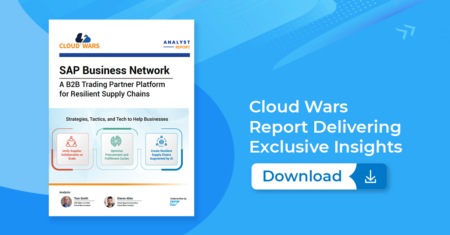
As the Agent Wars intensify and transform the enterprise-applications market, the world’s largest cloud provider has taken an early lead as Microsoft says 160,000 customers have begun using its agentic AI services and have built a total of 400,000 agents.
Here in the very early days of the Agent Wars, I think we need to look at those numbers in two distinct ways:
1. A spectacular opening lap. By any measure, those numbers represent a stunning achievement for Microsoft and its customers and partners. While many other Cloud Wars Top 10 companies have reported impressive customer demand for their agentic services and technologies, those numbers pale in comparison to those put forward by Microsoft.
2. What’s inside those numbers? At this time, it’s impossible to categorize the function and sophistication of the 400,000 customer-built agents. No doubt some and perhaps many are rudimentary at best, spawned in “agent-thons” where the goal is simply to create something that functions even if it will have no enduring utility or value.
On the other hand, let’s take an extreme position and guess that only 1% of those 400,000 will make it into production and offer tangible value. Well, even in this extreme case, that equates to 4,000 high-function agents at this early stage. If we boost that threshold from 1% to just 5%, that means those 160,000 Microsoft AI agent customers have created and deployed 20,000 agents that are boosting efficiency, productivity, speed, and insights.
And if we ratchet that up one more notch to 10% — which means we’re assuming 90% of the agents created were just workshop exercises — then the yield for production-quality agents jumps to 40,000.
At the same time, what value can be placed on the groundbreaking work to get thousands of people — probably tens of thousands — more comfortable with thinking about agents, using agents, building agents, deploying agents, and committing themselves to accelerating the proliferation of agents?
There’s an old bromide about how change isn’t an event — it’s a process. In my opinion, that’s how we need to think about what’s happening here in the early days of the AI and Agent Revolution: in our 10% “success” scenario above, those 360,000 agents that hypothetically did not make it into production are not “failures” because they pulled at least 360,000 people into the agentic AI mindset and made it vastly more likely that their next agent-building exercise will result in a solution that endures, that delivers value, and that adds to the cultural momentum that’s such a vital element of business transformation.
Final Thought
To understand more fully how Microsoft is thinking about agents and their incredible potential, please check out this 8-minute video I did last week with Microsoft’s Bryan Goode, corporate VP of business applications. With that insight, you’ll be in a much better position to establish the value of those 400,000 agents that have been built in a very short time by Microsoft’s 160,000 paying agent customers.
Ask Cloud Wars AI Agent about this analysis










